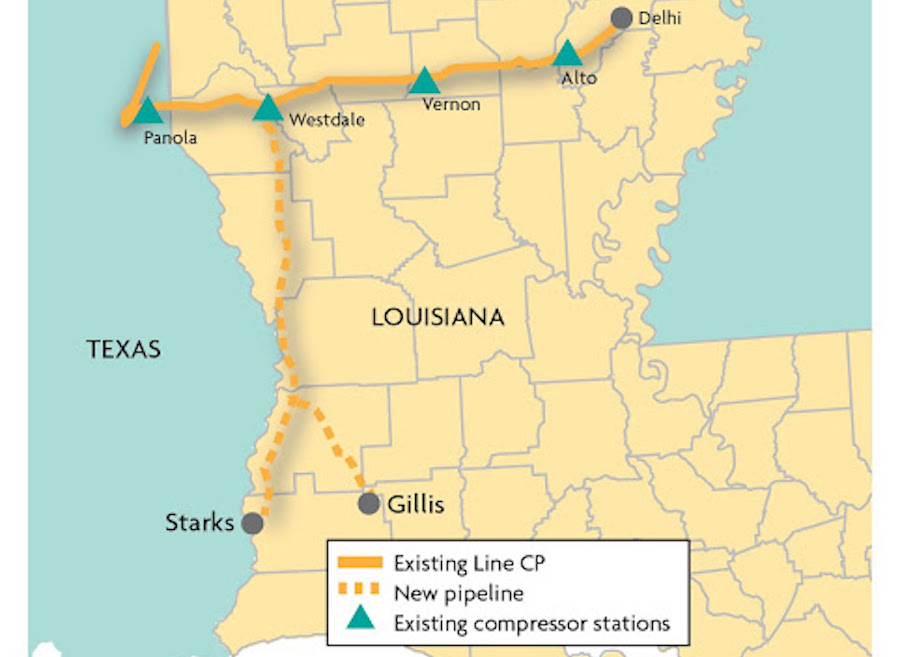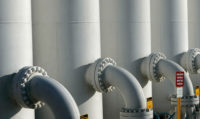Three U.S. natural gas pipeline projects totaling about $1.34 billion, according to the Federal Energy Regulatory Commission, gained agency approval on June 1 but without support from two commissioners who claim FERC should have required developers to include supplemental environmental impact statements to examine how the lines’ greenhouse gas emissions will affect climate change.
Richard Glick, named FERC chairman by President Joe Biden and Commissioner Allison Clements, a Democrat appointed at the end of the Trump admnistration, said in formal dissents that the National Environmental Policy Act requires an EIS unless the agency can determine that the projects either will not cause any significant adverse impacts or that these will be mitigated.
“In other words, when there are any ‘arguably significant’ environmental impacts, the Commission must address them in an EIS,” the commissioners said.
The projects include the 134-mile Gulf Run pipeline in Louisiana proposed by Enable Midstream Partners, which FERC estimated as a $1.1-billion project but was described by the company as costing $540 million. It will transport most of its estimated 1.7 billion cu ft per day from a compressor in Red River Parish, La. to an interconnect with a line near Starks, La., that wil feed into the Golden Pass LNG export plant under construction in Texas. Its first liquefaction train is set to enter service in 2025.
Also approved, despite the dissent, was the $260-million, 94-mile North Bakken expansion project in North Dakota, which owner WBI says responds to market demand for more natural gas supply linked to oil production in the state’s Bakken and Williston Basin areas. The expansion also helps reduce gas flaring in the region to meet state mandated natural gas capture targets, the company says. FERC also greenlighted a $46-million modification to existing compressor facilities on Enable’s Line CP in Louisiana.
FERC prepared environmental assessments for the three projects looking at various issues but not the effect of greenhouse gasses on climate change, which Glick and Clements said was “insufficient to satisfy our responsibilities under NEPA.”
The reviews do not determine if projects will significantly impact the environment and if effects will be mitigated. They noted, however that if greenhouse gas emissions are found to be significant, it “is not a death knell.” The benefits could outweigh “even significant adverse impacts,” said the dissent, and FERC could require a pipeline owner to adopt emission mitigation measures. “But before the commission can engage in that balancing process, it must first adequately assess the significance of a project’s adverse impacts, including its impact on climate change,” Glick and Clements said.
Specifically for the Bakken project, the commissioners said the EIS is particularly appropriate in light of WBI’s claim that the project will mitigate oil production flaring.
FERC did look at certain greenhouse emissions before issuing the approvals but compared them to total U.S. emissions. “This comparison allows us to assess the project’s share of contribution to GHG emissions at the national level,” it said, acknowledging that GHG emissions, such as those emitted from project operations, “will contribute incrementally to climate change.”
But the agency said its GHG analysis is for informational purposes only and “does not inform any part of this order’s holding, and shall not serve as precedent for any future order.”
The latest U.S. approvals come as Canada energy sector officials have been grappling with pipeline expansion issues in that country, since President Biden cancelled the Keystone-XL pipeline on Jan. 20, according to government documents obtained by the Canadian Press and shared in a June 4 report.





Post a comment to this article
Report Abusive Comment